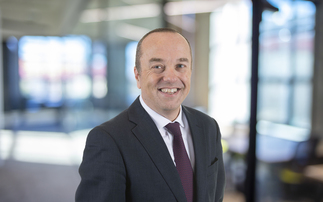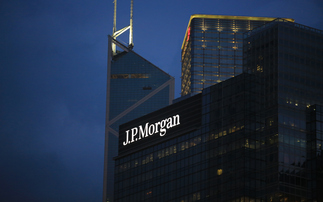Matthew Williams talks about PMG's asset allocation and why Pru stands out in the distribution sector
Tell us about Prudential's Portfolio Management Group (PMG). How do you bring together its various strands in your funds?
The PMG is a specialist team within Prudential that, among other things, runs multi-asset funds. We work with the greater investment resource of Prudential, which runs £256bn and has 500 investment professionals around the world with specialisms in all asset classes. The PMG's job is to co-ordinate those specialists and make sure we get our asset allocation calls right and give money to the right specialists to run.
So first, we focus on asset allocation, which is the most important decision in multi-asset portfolios. If the asset allocation is right, everything else falls into place. Also, when we decide to give money to say, a specialist in Chicago running US equities, we are monitoring the framework in which they do that and keeping an eye on governance. So our first focus is on the asset allocation in the multi-asset funds and secondly we are making sure our investment professionals know what they are doing and that we are keeping an eye on them to make sure they deliver what we need at the right time in the investment cycle.
Isn't multi-asset investing just a buzzword for something we should all be doing anyway?
That's absolutely right. In some ways we all do it - most people might have some residential property, some cash in the bank and some investment funds. But putting together correctly balanced multi-asset funds is something everyone should do, and it is at the core of all we do at Prudential.
In some areas people view multi-asset funds as a fad. But we think multi-asset is the right way to go. While to some it is a new concept, we have been doing it and delivering good results, year in year out, forever really.
But is asset allocation the job of the fund manager or of the investment adviser?
You have to be careful how you define it. There are two types of asset allocation that are relevant. The first is strategic, long-term asset allocation - a broad understanding that a mix of assets will see you in good stead over five to 10 years, dependent on your aims, your attitude to risk and so on. That's where the investment adviser has a huge amount to add - working out whether the client should be 80% in equities and 20% in bonds, or 20% in equities and 80% in bonds, or somewhere in between. That's where the adviser can add insight.
The other type is tactical asset allocation - gauging day to day whether investment markets are looking over or undervalued. You want a professional investment manager to back up the views of the adviser, deciding whether to go longer or shorter in certain assets or to take some risk off the table. In the short term, moving around money to add value is a discipline for the investment manager. The investment adviser can't get into that.
We have six market strategists who spend all day every day thinking about these things in order to make asset allocation decisions - they don't have to think about tax or general financial planning, and the adviser can't compete with that. So in the short term, asset allocation is a job for the investment manager, but over the long term it is a partnership between adviser and customer.
How do these funds differ from their peers in the ABI Distribution sector?
The Distribution sector is loosely defined and allows a multitude of types of investment, from funds that are 100% in bonds to those with quite high equity weightings. What differentiates us? The Managed Distribution fund has a higher equity weighting. The assets are in sterling only, because if you start taking foreign exchange risk, it brings variability to the income stream. But a high-equity weighting over the long term will give attractive returns.
That fund has existed for a long time. We complement it with another that doesn't have a high equity weighting - the High Yield Managed Distribution fund. It has a lower equity weighting and more of a spread in bonds, using different parts of the bond market. It has lower volatility overall than the Managed Distribution fund, but it has lower total returns - it's for a more risk-averse investor.
Our corporate bond expertise is second to none, and you see a lot of that in the High Yield Distribution fund. We are also very good in UK equities, so the Managed Distribution fund gives access to those skills as well.
Do you see multi-asset funds taking the place of with-profits as a low-risk core to a portfolio?
I'd have to say yes and no - everything is complementary. I look at with-profits from an investment perspective and sit in the team that runs with-profits as well as managed distribution funds and Oeics. The underlying investments are similar, but the products are different in the way that returns are distributed to the investor - for example, the with-profits fund has bonuses, while the Managed Distribution fund and the Oeics offer a total return. The underlying principles are the same and I don't think any one is better or worse than the others - they are different choices for different customers. So a customer who wants a well-run multi-asset fund without the features of with-profits might go for a distribution fund, but if they want smoothing rather than distributions they might go for the with-profits, and if they wanted to be fully exposed to the market they could go for an Oeic. There is a complementary choice across the piece.
There is a presumption that with-profits is no longer a valid choice. We would refute that, but if a customer does not want with-profits, these distribution funds are a good choice for them.
Which asset classes do you favour at present?
The commentary in the investment markets is centering on corporate bonds. We had assessed corporate bonds as expensive prior to this market episode. The credit spread available on corporate bonds for taking on the risk of credit events was not enough, so we reduced credit exposure across our funds. The fallout we have seen over the summer pushes corporate bonds into fair value rather than cheap territory - there has been a repricing of risk but we still feel corporate bonds are closer to being overvalued than undervalued.
The backdrop for equities seems supportive - corporate earnings are strong and core inflation is very well behaved. (If you think back 10 or 15 years when inflation was in double digits, the inflation rate today looks more supportive for a benign environment.) The world economy is no longer all about the US consumer - demand has become more global. Asia is becoming a consumer as well as a producer.
There is a nagging concern that if there is a disappointment on earnings, and if cyclical factors put pressure on consumer confidence and earnings, there is not much of a valuation buffer for companies to weather - so we are positive but cautious. We are running a modestly long equity position and keeping exposure to government bonds, so if something goes wrong in the equity markets, our government bond exposure will protect our funds.
Do you see the recent market volatility as an opportunity or a threat?
Clearly it's a difficult environment. If you have long-only portfolios with bonds and equities and the markets fall off, you will suffer short-term negative performance. The quid pro quo of the slightly higher returns of the Managed Distribution fund is slightly higher volatility.
When you think about the relationship between the fund manager, the adviser and the investor, these sort of markets are exactly when you want a truly skilled fund manager doing your asset allocation. For us, volatility provides us with opportunities to make decisions - although when markets fall, there will always be some negative returns. Our lower-risk funds have held up well. Mostly we see volatility as an opportunity, but it is an environment where investments can go down as well as up. It's a good time to remind people about the long-term nature of investment and the importance of a good long-term track record.
How do you see the future for multi-asset funds?
More than any other type of investment, multi-asset investing produces more efficient risk-adjusted returns. Other types of investment go up and down but multi-asset gives a better trade-off between risk and reward, so from an investment perspective, the future is bright.
There are so many factors to support multi-asset investing. As a more efficient investment, it fits well with the Treating Customers Fairly agenda. There is a better understanding of what multi-asset can do. Advisers are learning to construct long-term portfolios and use multi-asset rather than fund picking. Choosing manager A over manager B makes only a 10% difference to overall returns; being in the right assets is 90% of the result.
What are the ways people can hold these funds?
Financial Advisers can get access to the range of PMG's multi-asset funds through most of Prudential and Prudential International's investment and retirement products.
www.pruadviser.co.uk/funds












